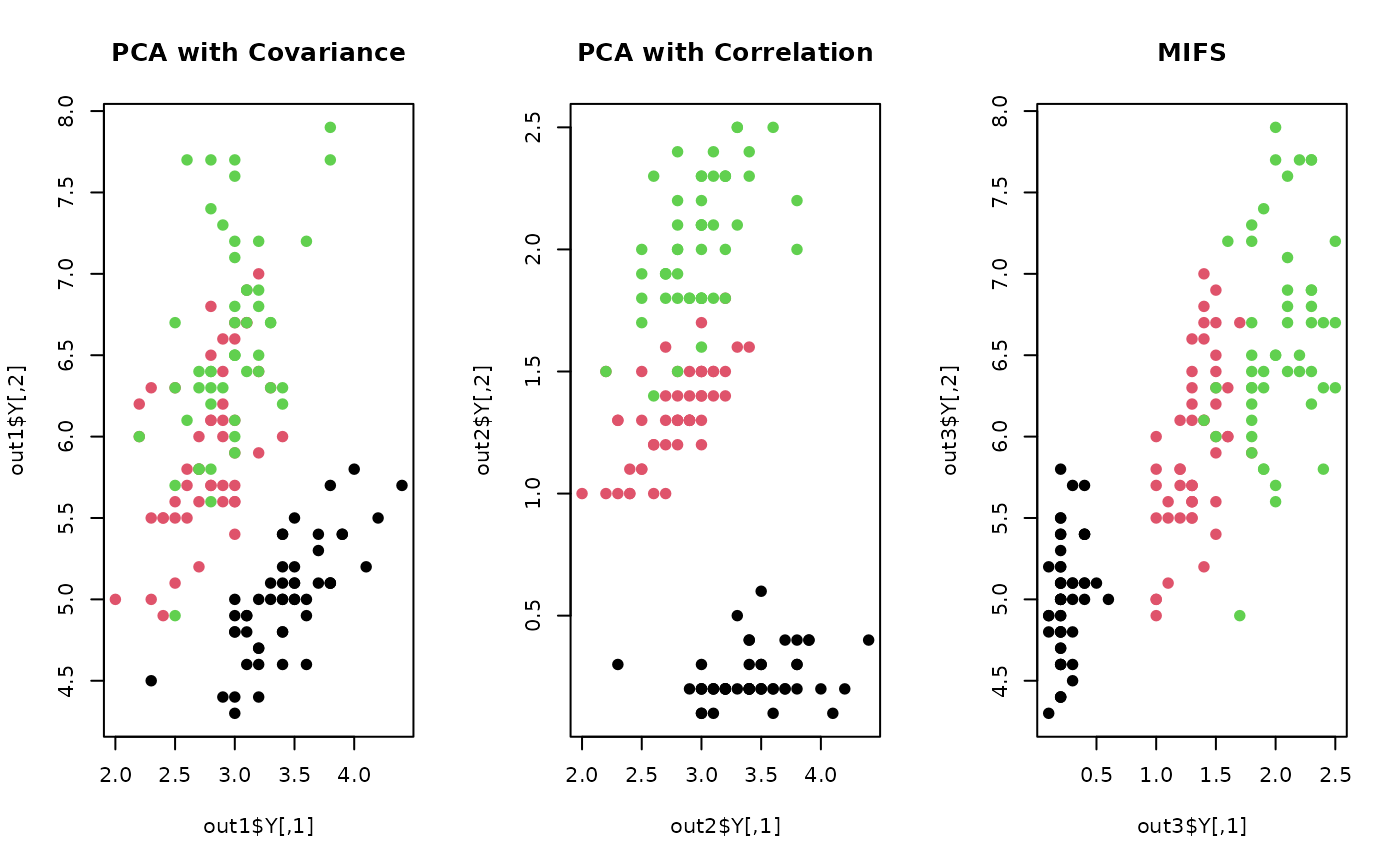Feature Selection using PCA and Procrustes Analysis
Source:R/feature_PROCRUSTES.R
feature_PROCRUSTES.Rddo.procrustes selects a set of features that best aligns PCA's coordinates in the embedded low dimension.
It iteratively selects each variable that minimizes Procrustes distance between configurations.
do.procrustes(X, ndim = 2, intdim = (ndim - 1), cor = TRUE)Arguments
- X
an \((n\times p)\) matrix whose rows are observations and columns represent independent variables.
- ndim
an integer-valued target dimension.
- intdim
intrinsic dimension of PCA to be applied. It should be smaller than
ndim.- cor
mode of eigendecomposition.
FALSEfor decomposing covariance, andTRUEfor correlation matrix in PCA.
Value
a named Rdimtools S3 object containing
- Y
an \((n\times ndim)\) matrix whose rows are embedded observations.
- featidx
a length-\(ndim\) vector of indices with highest scores.
- projection
a \((p\times ndim)\) whose columns are basis for projection.
- algorithm
name of the algorithm.
References
Krzanowski WJ (1987). “Selection of Variables to Preserve Multivariate Data Structure, Using Principal Components.” Applied Statistics, 36(1), 22. ISSN 00359254.
Examples
# \donttest{
## use iris data
## it is known that feature 3 and 4 are more important.
data(iris)
iris.dat = as.matrix(iris[,1:4])
iris.lab = as.factor(iris[,5])
## try different strategy
out1 = do.procrustes(iris.dat, cor=TRUE)
out2 = do.procrustes(iris.dat, cor=FALSE)
out3 = do.mifs(iris.dat, iris.lab, beta=0)
## visualize
opar <- par(no.readonly=TRUE)
par(mfrow=c(1, 3))
plot(out1$Y, pch=19, col=iris.lab, main="PCA with Covariance")
plot(out2$Y, pch=19, col=iris.lab, main="PCA with Correlation")
plot(out3$Y, pch=19, col=iris.lab, main="MIFS")
 par(opar)
# }
par(opar)
# }